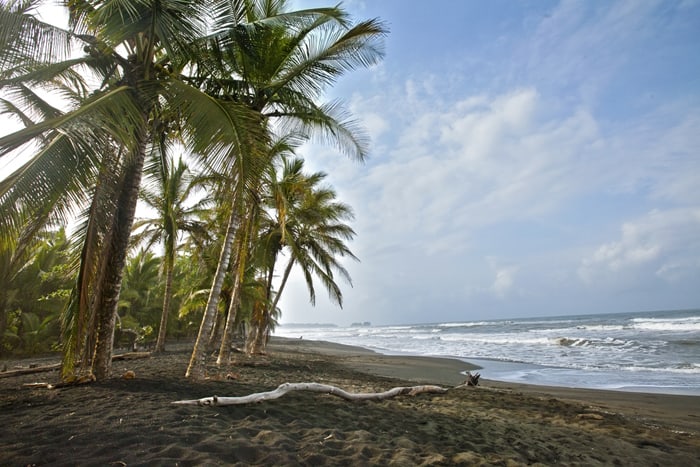Costa Rica’s Gandoca-Manzanillo National Wildlife Refuge, a biodiverse gem on our southern Caribbean coast, is under siege from unregulated development and government inaction. Environmental groups and local communities are sounding alarms, calling for urgent action to protect this Ramsar Site 783, recognized globally for its wetlands, mangroves, and critical habitats for species like manatees and sea turtles.
Real Estate Boom
The refuge, covering 25,910 acres of rainforest, coastline, and coral reefs, faces growing threats from real estate and tourism projects. Environmental organizations, including the Natural Resources Surveillance Committees (COVIRENAS) and the South Caribbean Green Block, report that hundreds of construction permits have been issued in protected areas, including wetlands and turtle nesting sites, violating the Ramsar Convention’s conservation mandates. A 2017 certification of State Natural Heritage (PNE) lands in the Talamanca Maritime-Terrestrial Zone, combined with lax oversight, has allowed developers to fragment ecosystems for luxury homes and resorts, often through irregular land titling.
Illegal logging and construction, particularly in areas like Punta Uva Beach, have sparked outrage. Last year, locals reported trucks hauling timber from the refuge, with no apparent response from authorities despite repeated complaints. The proposed Talamanca Coastal Regulatory Plan (PRCT) has raised fears of further urbanization, with critics arguing it prioritizes tourism over conservation without proper technical studies. Also last year, reports surfaced that authorities attempted to reduce the refuge’s boundaries by 188 hectares, prompting a Constitutional Chamber ruling that ordered immediate compliance with a 2019 mandate to delimit protected areas.
Wetlands which are vital for climate regulation and coastal protection have been hit hard. A 2017 SINAC report valued Gandoca-Manzanillo’s ecosystems for their role in biodiversity and carbon storage, yet recent actions suggest a rollback of protections.
Congressman Ariel Robles denounced these moves before the Ramsar Convention in January, citing irregularities in boundary changes and non-compliance with international standards. The refuge’s red mangrove swamp, a spawning ground for marine life, and its beaches, nesting sites for endangered sea turtles, are increasingly at risk.
Community Impacts
Beyond ecological damage, development pressures threaten our local communities, including Afro-descendant and indigenous groups whose livelihoods depend on the refuge. Real estate speculation has displaced residents and eroded cultural ties, with land sales often bypassing community input. Environmental groups have filed complaints with the Ombudsman’s Office and Attorney General’s Office, demanding restored protections and accountability for illegal permits.
The Constitutional Chamber’s March suspension of all permits in the refuge, halting businessman Pacheco Dent’s development plans, marked a win for conservationists. Yet, earlier inaction, including the Ministry of Environment’s (MINAE) failure to act on 2019 court orders, has fueled distrust. Critics point to MINAE’s reassignment of a whistleblower official who opposed boundary reductions as evidence of resistance to reform.
Costa Rica, a signatory to the Ramsar Convention since 1992, faces scrutiny for failing to uphold its commitments. The refuge’s 1995 designation as a Ramsar site underscores its global importance, yet ongoing violations threaten its status. Environmentalists argue that stronger enforcement, including stricter penalties and clearer land-use policies, is needed to curb territorial chaos caused by decades of lax governance.
The refuge remains a popular place to see wildlife like sloths, monkeys, and macaws, drawing eco-tourists to its trails and beaches. But without decisive action, its ecosystems and cultural heritage could be lost. Recent arrests tied to illegal logging signal progress, but environmental groups remain vigilant, urging the government to prioritize conservation over profit. As Costa Rica’s reputation as an environmental leader hangs in the balance, the fight to save Gandoca-Manzanillo continues.








